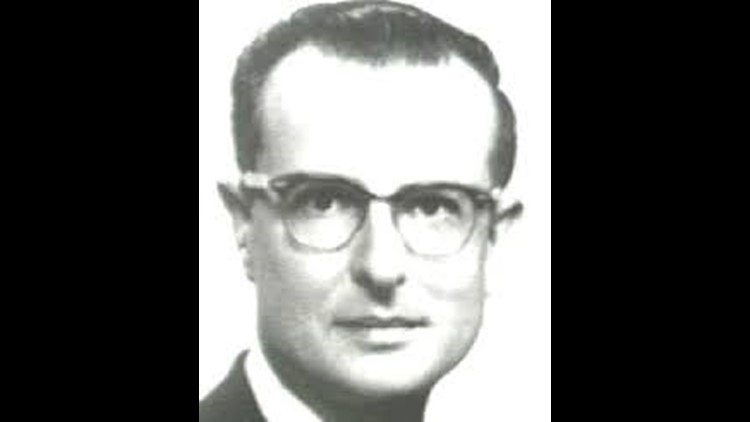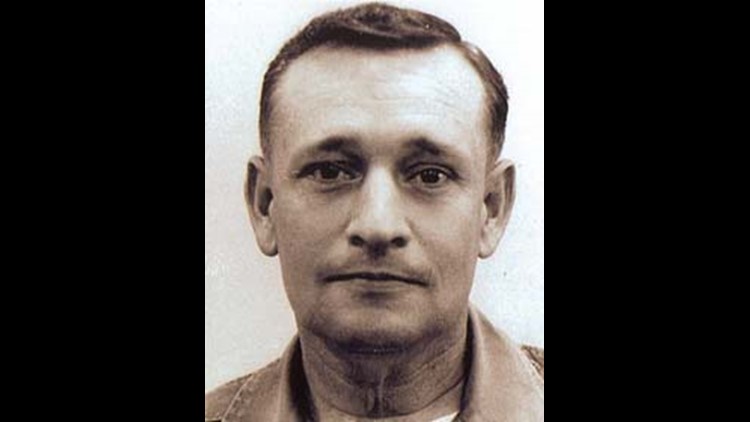Could missing man from Grayling, Mich. be D.B. Cooper?
The security hurdles air travelers face today present quite a juxtaposition from what they were 44 years ago, which is why nobody thought anything was out of the ordinary on November 24, 1971, when a man in Portland, Oregon, bought a seat on Northwest Flight 305 bound for Seattle, Washington. What happened aboard that Boeing 727 jetliner that day was far from ordinary.

GRAYLING, Mich. - There was once a time when there were no security or identity checks on domestic flights in the United States. There were no security checks on luggage, and there were no frisks or cavity searches before boarding.
You could literally buy a ticket and board a plane with no questions asked.
That practice is no longer possible because airport security has changed drastically in the last 45 years, and especially since the September 11, 2001, attacks.
Today, if you choose to travel via the air, you're asked to arrive at the airport several hours before your flight due to long lines for aggressive security checks by the Transportation Security Administration (TSA).
The TSA was created as a part of the Aviation and Transportation Security Act, which was passed by the 107th U.S. Congress and signed into law by President George W. Bush on November 19, 2001 – a little more than two months after the September 11 attacks.
The security hurdles air travelers face today present quite a juxtaposition from what they were 44 years ago, which is why nobody thought anything was out of the ordinary on November 24, 1971, when a man in Portland, Oregon, bought a seat on Northwest Flight 305 bound for Seattle, Washington.
What happened aboard that Boeing 727 jetliner that day was far from ordinary.
The legend of D.B. Cooper was born.
![A Michigan connection to the Cooper case? [video : 76339534]](http://wzzm-download.edgesuite.net/video/76339534/76339534_Still.jpg)
"Dan Cooper, otherwise known as D.B. Cooper, is an unidentified man," said Ross Richardson, who resides in Lake Ann, Michigan, and has authored several books about unsolved mysteries. "Cooper's disappearance is one of the most intriguing mysteries of the 20th centuries."
In Richardson's most recent book, entitled "Still Missing," he spends a good chunk of the read rethinking the D.B. Cooper case, while offering up a new theory on the disappearance that Richardson believes nobody, not even the FBI, has considered or investigated.
D.B. Cooper's actual plane ticket, one of the parachutes and black tie
On November 24, 1971 (Thanksgiving eve), witnesses say a nondescript man, using the name Dan Cooper, approached the Northwest Airlines counter in Portland, Oregon, and used cash to buy a one-way ticket on Flight 305, which was bound for Seattle, Washington.
"The man was wearing a black business suit with a thin, black tie and black loafers," said Richardson. "He bought the ticket and boarded the plane."
Soon after he settled on the plane, the Cooper subject ordered a drink – a bourbon and soda.
Once the jet took off, which was a short time after 3 p.m. PT, Cooper handed one of the flight attendants a note indicating that he had a bomb in his briefcase.
"Cooper asked the stewardess to sit next to him," said Richardson. "Cooper opened his briefcase and showed her what appeared to be a bunch of wires and red sticks.
"Cooper demanded the stewardess write down what he'd told her and take it to the captain."
His demand was that he wanted four parachutes and $200,000.
"Flight 305 would fly around Seattle, waiting for the money and parachutes to arrive at the airport, and once they did, the plane landed without incident and Cooper managed to work out an exchange," said Richardson. "He basically traded the 36 passengers on board the flight for the parachutes and the money."
The passengers were never aware of the threat on board. A bank in Seattle was contacted and a bag of money, all $20 bills with prerecorded serial numbers, totaling $200,000, was delivered to the plane, which was re-fueled and cleared for takeoff.
"The bag of loot weighed 23 pounds," said Richardson. "Once the chutes and money were delivered, Cooper ordered the flight crew to take off for Mexico."
Brian Ingram was 8-years old when he found $5,800 of Cooper's ransom
The 727 then lifted off from Seattle and began heading south, Richardson said, and sometime within the early part of the flight, the rear, or aft, stairs opened on the plane.
"He demanded that the pilot fly the jet at 10,000 feet so it wouldn't require oxygen so the cabin wouldn't decompress," Richardson said. "Somewhere between Seattle and Reno, Nevada, Cooper tied the bag of ransom money to himself, strapped on one of the parachutes, and jumped out of the back of the plane to an unknown fate."
He was never seen or heard from again. Cooper literally jumped out of the back end of the plane and into American folklore.
The pilots of the 727 would eventually land the plane safely, and soon realized that Cooper had disappeared.
What has happened after that has been a debate for 44 years; the unknown mystery man has fascinated people and frustrated law enforcement and the FBI ever since.
"When investigators began searching the plane, they found that Cooper had left behind some items," added Richardson. "One of the parachutes was left on the plane, as well as a skinny black tie and a tie clasp."
The Seattle FBI still has these items in evidence to this day.
"The stewardess who sat next to Cooper on the flight was Tina Mucklow, who was the primary witness in the skyjacking," said Richardson. "She got a good look at him and described him as charming and intelligent."
The FBI was able to gain enough of a description of Cooper from the three flight attendants who spent close to 5 hours with this man. Mucklow, along with Florence Schaffner and Alice Hancock, were able to help the FBI produce a composite sketch which, still to this day, remains the only physical description of the Cooper suspect.
![635832875948080442-disappearance-cooper [ID=75889922]](http://cdn.tegna-tv.com/-mm-/aaa527894a8a41c93d8ce192d1488018c3d414d7/r=500x326/local/-/media/2015/11/16/WZZM/WZZM/635832875948080442-disappearance-cooper.jpg) According to the stewardesses, Cooper was a white man in his forties, between 5 feet, 10 inches and 6 feet tall and weighing 170 to 180 pounds, with brown eyes.
According to the stewardesses, Cooper was a white man in his forties, between 5 feet, 10 inches and 6 feet tall and weighing 170 to 180 pounds, with brown eyes.
"The FBI learned of the crime in flight and immediately opened an extensive investigation that lasted many years," said Wayne Walker, who is a well-known Cooper researcher. "The FBI called the case NORJAK for "Northwest Hijacking".
The FBI interviewed hundreds of people and tracked leads across the nation, Walker said, and by the fifth anniversary of the hijacking, they had considered more than 1,000 suspects, eliminating all but two dozen from consideration.
"There was a miscommunication between the FBI and the media," said Richardson, describing how Dan Cooper got the name D.B. Cooper. "The media started calling him D.B. Cooper and the FBI decided not to correct it so that any leads with the name Dan Cooper would be taken seriously, and any leads with the name D.B. Cooper would be dismissed."
After the skyjacking, one of the largest manhunts in U.S. history was launched. The military was called in and approximately 1,000 troops searched the suspected jump zone on foot and in helicopters.
Did Cooper die, or did he successfully complete his jump that night, and get away with the crime?
To this day, nobody knows.
No human remains have ever been recovered.
The case has stumped investigators for decades,
To this day, the FBI considers the D.B. Cooper case an open case, which is why they won't publicly discuss theories or individuals who are being considered, investigated or have been eliminated.
Amidst the decades of discussion that has been generated by the Cooper mystery, many "citizen sleuths" have come to the conclusion that Cooper could have never survived the jump.
"The parachute he used couldn't be steered, and his clothing and footwear [loafers] were unsuitable for a rough landing," said Walker. "He jumped over a wooded area, which was a dangerous proposition even for a seasoned pro."
The theory of Cooper not surviving the jump gained serious momentum in 1980 when an 8-year-old boy by the name of Brian Ingram, who was camping with his family along the banks of the Columbia River in Washington state, found three rotting bundles of $20 bills (which totaled $5,800) that matched the serial numbers from the ransom money that Cooper demanded 9 years prior.
Notable D.B. Cooper supects the FBI has invesitgated and eliminated
In the 35 years since Ingram found the wads of cash, many more theories have come to light, which is why the Cooper case has never completely faded from discussion.
While most of the 1,000-plus suspects, including assorted publicity seekers and deathbed confessors, investigated by the FBI have been ruled out, there are some notable examples worth mentioning.
First, a man by the name of John List, a World War II and Korean War veteran who, in 1971, murdered his wife, three teenage children, and 85-year-old mother (15 days before the Cooper hijacking), was a suspect in the Cooper case. After the murders, List happened to withdraw $200,000 from his mother's bank account and disappeared.
He was captured in 1989 after living under a false identity for 17 years. List would admit to killing his family, but told authorities he had no involvement in the Cooper hijacking.
Ralph Himmelsbach, the retired FBI agent who initially investigated the Cooper hijacking, believes Cooper died, but added that John List warranted investigating because both were about the same height and weight and wore glasses.
John List died in prison in 2008. Since no direct evidence implicates him, the FBI is no longer considering John List as a Cooper suspect.
Second, William Pratt Gossett was a Marine Corps, Army and Army Air Force veteran who saw action in Korea and Vietnam. His military experience included advanced jump training and wilderness survival.
According to Galen Cook, a lawyer who's been researching the Cooper case for more than two decades, Gossett once showed his sons a key to a Vancouver, British Columbia safety deposit box which, he claimed, contained the missing ransom money.
Late in his life, Gossett reportedly told his three sons that he committed the hijacking, but in spite of all the circumstantial evidence, the FBI was never able to implicate Gossett, and could never place him in the Pacific Northwest at the time of the Cooper hijacking.
"There is not one link to the D.B. Cooper case other than the statements [Gossett] made to someone," FBI Special Agent Larry Carr told ABC News.
William Gossett died in 2003.
Last, and the most recent Cooper theory to make news, was in 2011 when a woman named Marla Wynn Cooper publicly suggested her late uncle, Lynn Doyle Cooper, was D.B. Cooper. Marla had some interesting evidence to back up her claim.
Lynn Doyle Cooper, who died in 1999, grew up in Oregon and was familiar with the area where the hijacker jumped, Marla Cooper said.

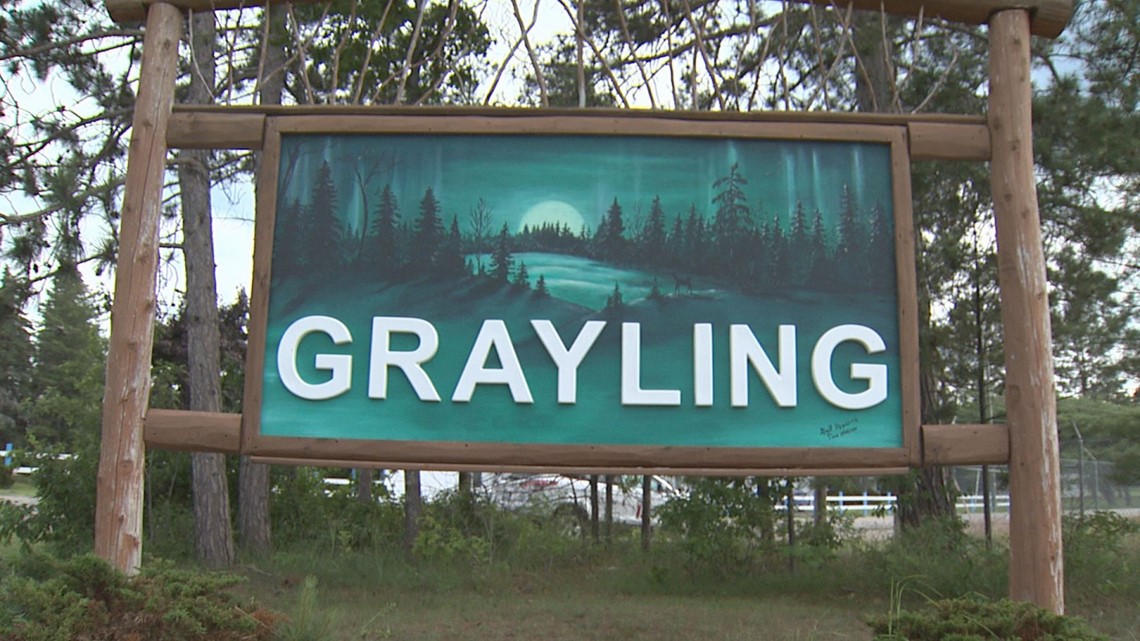
According to an ABC News report, the FBI investigated Marla Cooper's credible claims because much of what she said about her late uncle fits their profile of the hijacker. The report went on to say that the FBI believes the Cooper suspect had a military background; Lynn Doyle Cooper was a Korean War Veteran.
Marla Cooper told ABC News that the FBI believes the hijacker assumed the alias "Dan Cooper" from the 1960's French comic book, which bore the same name. Marla Cooper told ABC News that her late uncle had a bunch of the Dan Cooper comic books thumbtacked to the wall.
After investigating, the FBI ultimately concluded that Lynn Doyle Cooper's DNA did not match the partial DNA profile obtained from the hijacker's tie that's been in evidence since 1971.
The FBI has made no further public comment regarding Lynn Doyle Cooper.
One year after Marla Cooper's claim made news, Ross Richardson began thinking about topics for the next book he wanted to write. While the Cooper case continues to be one of our nation's greatest mysteries, and Richardson thrives on writing about mysteries, he says the D.B. Cooper wasn't on his radar.
![635832899934791960-Still1116-00001 [ID=75892662]](http://cdn.tegna-tv.com/-mm-/33d97f8a03d5ea06baca0f7a30eca34c8bd87643/r=500x281/local/-/media/2015/11/16/WZZM/WZZM/635832899934791960-Still1116-00001.jpg) Being a Michigan resident, Richardson focuses his writings primarily on mysteries and disappearances in Michigan.
Being a Michigan resident, Richardson focuses his writings primarily on mysteries and disappearances in Michigan.
"I originally wanted to write a book that had stories about 10 missing ships, 10 missing airplanes, 10 missing persons and a few unrecovered drowning victims," said Richardson. "The idea was that all the subjects in the book could be found using some of the techniques we use in shipwreck hunting, thus involving the readers in the actual solving of these mysteries, or perhaps coming up with their own theories for each mystery."
But as time went on, Richardson says he decided to narrow the scope down to the mysterious disappearance surrounding one man from Grayling, Michigan.
"Something about the disappearance of Dick Lepsy intrigued me," said Richardson. "It spoke to me."
Robert Richard Lepsy was a grocery store manager, husband and father of four. On October 29, 1969, Lepsy mysteriously disappeared from Grayling and, to this day, hasn't been seen or heard from since.
"On the day he disappeared, he called his wife, Jackie, around lunch time and told her he was going to go for a ride," Richardson said, detailing the last known facts about Lepsy. "A few days later, Dick Lepsy's car was found in the parking lot at Traverse City's Cherry Capital Airport with the doors unlocked; a half-pack of cigarettes were sitting on the dash, and the keys were still in the ignition.
"Both the Grayling Police Department and the Michigan State Police worked together on the Lepsy case, but they ultimately concluded that Mr. Lepsy voluntarily left on his own accord, and that this was not a missing persons case, so not a large effort was made to find Lepsy," added Richardson.
Richardson said the more he read about and researched the Lepsy disappearance, the more fascinated and obsessed he became, which ultimately led him to locating one of Lepsy's surviving family members.![635832916054322618-Still1116-00002 [image : 75894298]](http://cdn.tegna-tv.com/media/2015/11/16/WZZM/WZZM/635832916054322618-Still1116-00002.jpg)
"I contacted Lisa Lepsy, Dick Lepsy's daughter," Richardson said. "After speaking at great length with her about her father, his disappearance, and the emotional impact it's left on the family, I decided the Lepsy case would be the backbone of my book."
Lisa Lepsy was 13 years old when her father disappeared.
"As the only girl, I had a very special relationship with my father," Lisa Lepsy said during an interview with WZZM. "There wasn't anything during my childhood in Grayling that ever made me think something like this would ever happen."
Lisa described her father as very intelligent and often a deep thinker.
"The last time I saw him was the night before he disappeared," said Lisa. "It wasn't until two or three days after he vanished that my mother gathered [my three brothers and I] all together and told us she didn't think dad was coming home.
"I remember crying and wondering why he didn't say goodbye to me."

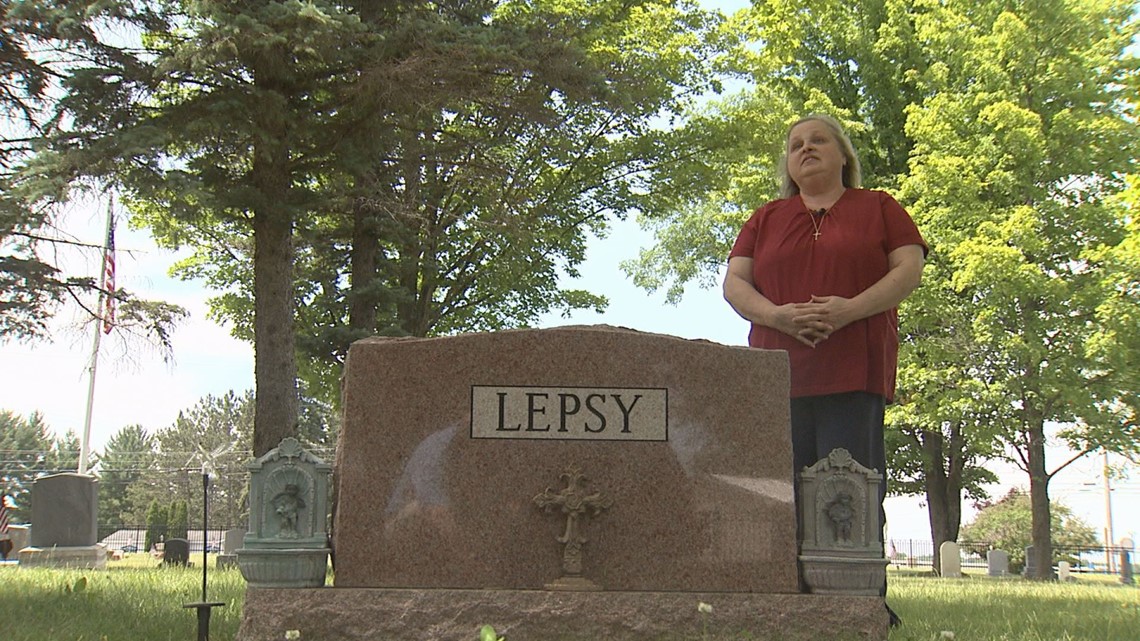
Lisa Lepsy said while the days and months passed, the family continued to wait for the phone to ring, or look for Dick Lepsy to walk through the front door, but he never did.
"I've never stopped looking for him because I know how much my dad loved us," Lisa said. "The most difficult thing is not knowing what happened, and not having any answers."
Richardson's drive to look deeper into the Lepsy case continued to grow stronger.
"I went to a library in Traverse City, Michigan, and began pulling microfilm newspaper articles from the week before and the weeks after Lepsy's disappearance," Richardson said. "I could find no published news articles about Lepsy at all in any of those newspapers, but on the front page of every edition I read, there were stories about hijackings, including the most famous hijacking of them all – D.B. Cooper."
Richardson said his mission was never to compare or contrast Dick Lepsy and D.B. Cooper, but for some reason, he decided to pull some of the photos he had of Lepsy and put them against the FBI's composite sketch of Cooper.
![635839517487419580-LepseyPics1.jpg [ID=76302110]](http://cdn.tegna-tv.com/-mm-/68e8968ee8a51f08552bfe285f46f3e3403fac93/r=500x359/local/-/media/2015/11/24/WZZM/WZZM/635839517487419580-LepseyPics1.jpg)
"I was stunned to see the physical similarities between the two men," Richardson added. "Both Lepsy and the Cooper suspect were described to be 6-feet-tall, both weighed about 180-pounds and both had black hair and brown eyes."
It was at this point that Richardson decided just investigating Lepsy was no longer enough; he also needed to look deeper into the D.B. Cooper case.
"As I dove into the Cooper case, even more similarities between the two men came to light," said Richardson.
"The FBI says the skyjacker spoke with no discernible accent, and they believe he was from the Midwest; Dick Lepsy grew up in Chicago before he moved to Grayling.
"The FBI says the skyjacker left behind a black tie and a tie clasp on the plane; it's the exact same tie that was mandatory neck wear for all Glenn's Market employees.
"The FBI says the skyjacker's shoes were loafers; those were Dick Lepsy's favorite shoes."
The Cooper skyjacking happened two years after Dick Lepsy's disappearance, and the night the Cooper news broke, Lisa Lepsy remembers she and her siblings watching and how they all reacted.
"We were all sitting on the couch watching Walter Cronkite," said Lisa. "When the composite sketch of D.B. Cooper came on the TV screen, everyone looked at each other and said, 'That's dad!'
"We were stunned because the resemblance was unbelievable, and my brothers and I were all sure that was our dad."
In 1977, eight years after her father's disappearance, Lisa Lepsy moved from her home in Lansing, Michigan to Murfreesboro, Tennessee, where she would live for the next 22 years. Even though her life had taken her out of state, she and her mother would spend decades spearheading an effort to bring national attention to Dick Lepsy's disappearance. The pair was even invited to appear on a national talk show in 1986.
"In 1982, I wrote and sent a letter to the Mexican Consulate, alerting their government about my father, just in case that's where he chose to run off" said Lisa. "My mother and I also placed several newspaper ads over the years."
Despite their continued campaign to find answers, no new information ever came to light about Dick Lepsy.
In May of 1993, Lisa Lepsy says she experienced a very random and odd occurrence that she strongly believes was connected to her father's disappearance.
"I was home and I saw two gentlemen walking up to my door," Lisa said. "They were both dressed in black suits and wore sunglasses.
"They kind of muscled their way through my doorway and flashed their identifications at me really fast, and the first words out of their mouths were, 'Have you found your father yet?'"
Lisa said her initial thought was that the men came to tell her they had found her father, and her decades of wondering and sadness were finally over.
"The men then asked me, 'Are you sure you didn't find your father; we just want to make sure you haven't found your father,'" Lisa said. "I then asked the men who they were, and they told me they were from the John Hancock Insurance company.
"They claimed they traveled from Chicago and were literally in and out of my house in five minutes."
![635838911924112111-bizcard.jpg [image : 76275026]](http://cdn.tegna-tv.com/-mm-/07da66dc2a6ee3c8cf26f4b2ac1aa01b28072bf1/c=153-19-820-589/local/-/media/2015/11/23/WZZM/WZZM/635838911924112111-bizcard.jpg)
The men left a business card behind. On it was the name "Charles J. Mitchell, FLMI".
"I immediately took the business card, called the phone number that was on it," Lisa said. "A person answered and I told them two gentlemen representing John Hancock Insurance Company just came to my house asking if I had found my father yet.
"I told the person the name and title that were on the business card; I even went as far as faxing the business card to John Hancock's headquarters in Chicago, because they said they wanted to see the card to verify it was an actual employee of theirs.
"Once they received the card and looked at it, they told me they did not have that [Special Activities/Central] unit, and that nobody named Charles J. Mitchell was employed at their company."
Lisa says the men never returned, but the whole experience was very frightening.
"I never found out who the men were or why they sought me out about my father so many years later," Lisa added. "To this day, I'm still shaken over the strange encounter with these men."
After endless research, and interviews with Lisa as well as several former co-workers of Dick Lepsy, Ross Richardson says he's convinced that Robert Richard Lepsy is a missing person whom the FBI should strongly consider investigating as a possible D.B Cooper suspect.
Both Richardson and Lisa Lepsy are hoping that by going public with this theory, two mysteries can be solved.
"By putting this story out there, we may be able to get the clues we need to solve not one but two mysteries," said Richardson. "I hope the FBI looks into this, starting by running tests on the DNA samples that have been submitted by Lisa.
"One of the only ways were are going to get resolution for either of these mysteries is to publicize Lepsy's image and hope that one of the stewardesses who saw the Cooper suspect can recognize or dismiss Lepsy as a possible suspect, or someone comes forward with new information about the disappearance of Robert Richard Lepsy.
"Can I say that Dick Lepsy is D.B. Cooper? No, I cannot; I need proof, but I strongly believe the proof is out there."
Lisa Lepsy says she submitted a DNA sample in 2011, when she was invited to the inaugural "Missing in Michigan" day in Detroit, so if the FBI in Seattle wants to pull the sample, it can, assuming it hasn't already.
![635838909898127124-FBI-email-snip.JPG [image : 76274870]](http://cdn.tegna-tv.com/-mm-/e6e06a24d68d70fe0a1fe19b69e066ca756cf11f/c=250-130-968-744/local/-/media/2015/11/23/WZZM/WZZM/635838909898127124-FBI-email-snip.JPG)
Lisa Lepsy finally added her father to the NamUs (National Missing and Unidentified Persons System) in 2011, meaning Dick Lepsy's disappearance was literally forgotten about for 42 years.
"I truly hope the FBI takes a serious look at this," said Lisa. "It's definitely a possibility."
WZZM contacted the FBI Seattle Division, alerting them we were doing this story. This is a portion of the response we received from Ayn Dietrich-Williams, who is the Media Coordinator for the division:
![635838731397111214-Melvin-Wilson.JPG [image : 76255562]](http://cdn.tegna-tv.com/media/2015/11/23/WZZM/WZZM/635838731397111214-Melvin-Wilson.JPG)
The D.B. Cooper case remains the only hijacking in the United States that has gone unsolved.
During the production of this story, a woman by the name of Vicki Wilson, who lives in Minneapolis, Minnesota, reached out to WZZM to inform us that her father, Melvin Luther Wilson, also should be investigated as a possible D.B. Cooper suspect.
Mr. Wilson disappeared Sept. 15, 1971 on his way to being sentenced on a counterfeiting charge. The disappearance happened 69 days before the D.B. Cooper skyjacking. Vicki Wilson tells WZZM that she submitted DNA to the FBI in 2011, but has no idea if her father was ever investigated and/or eliminated as a Cooper suspect.


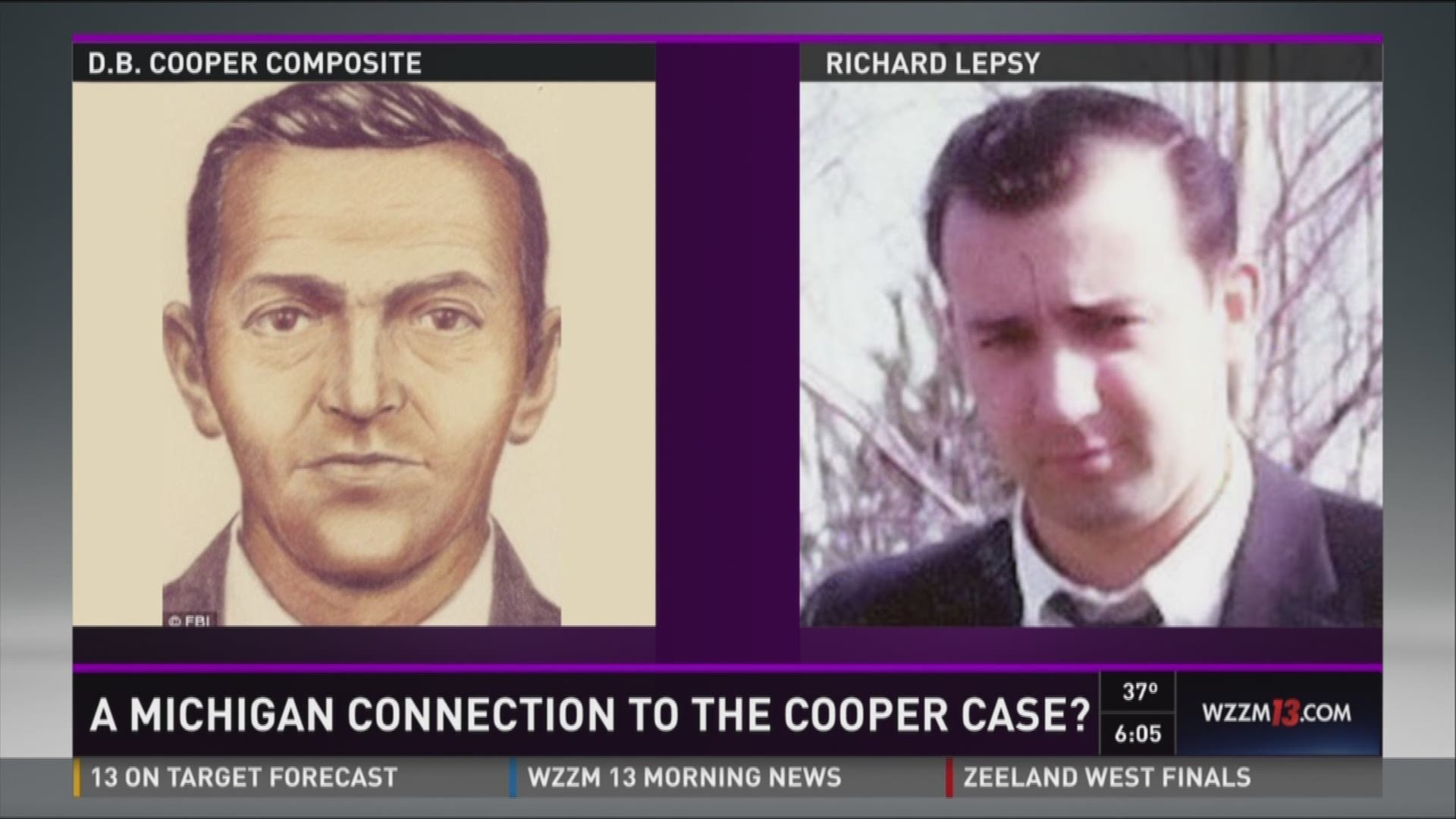

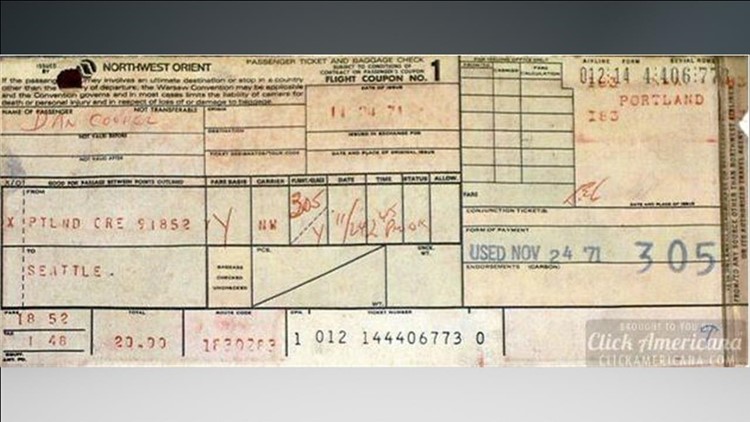



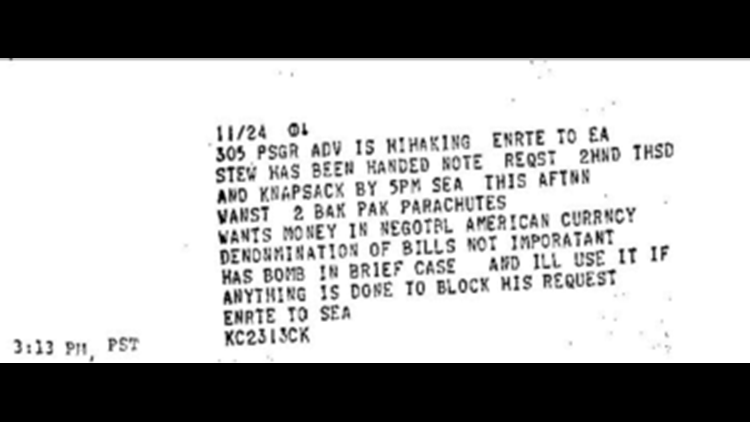

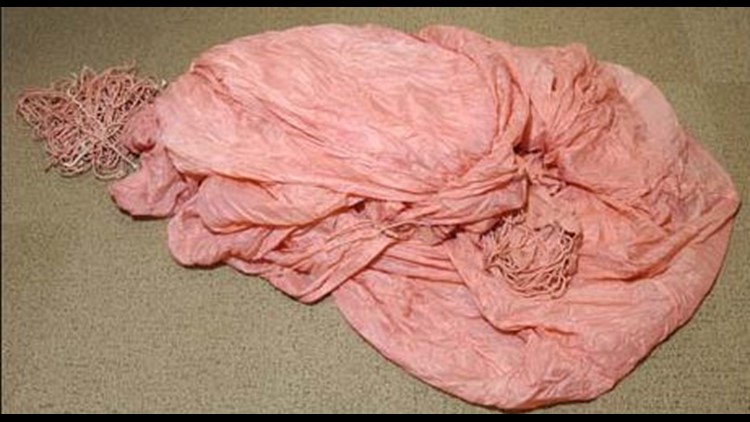





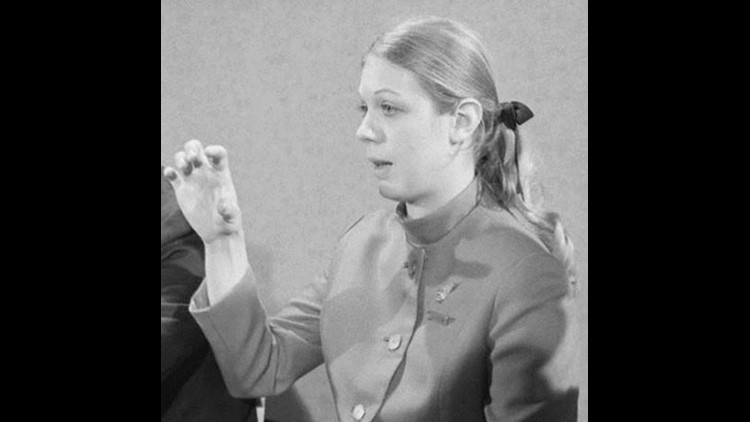



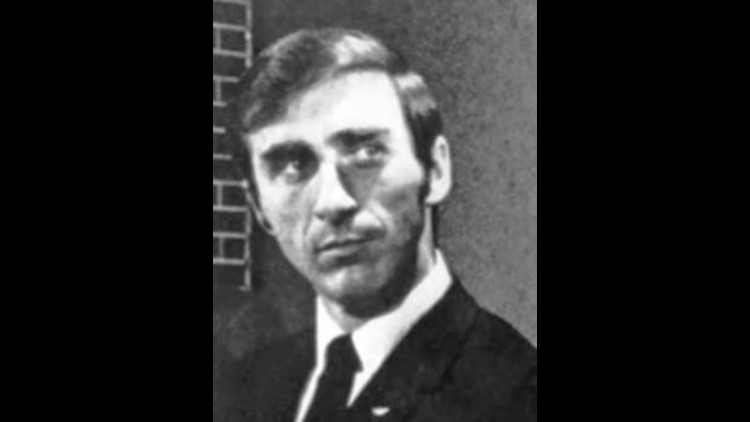

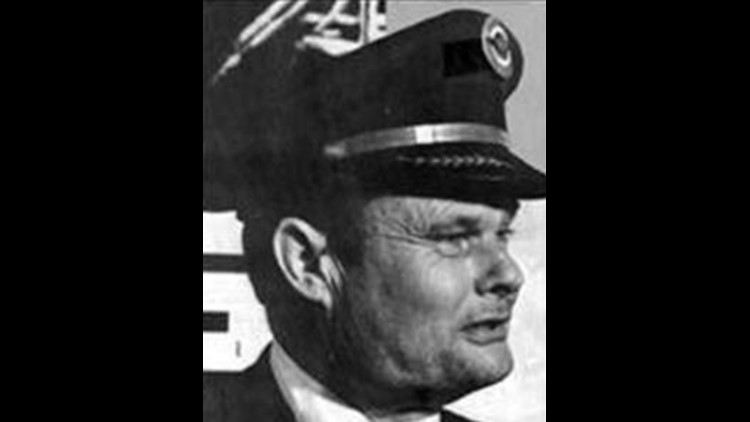

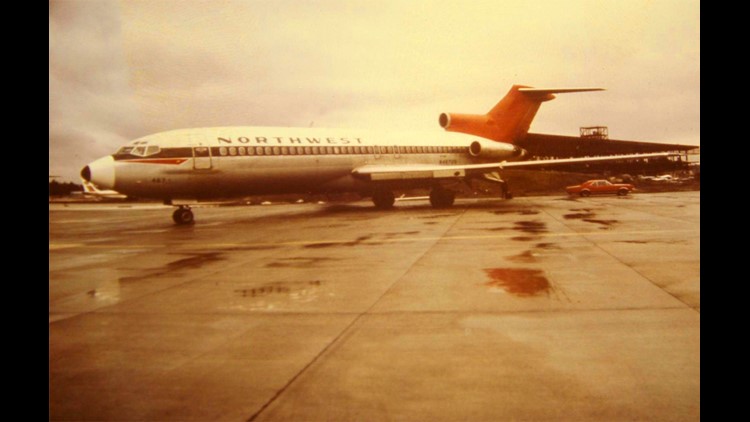



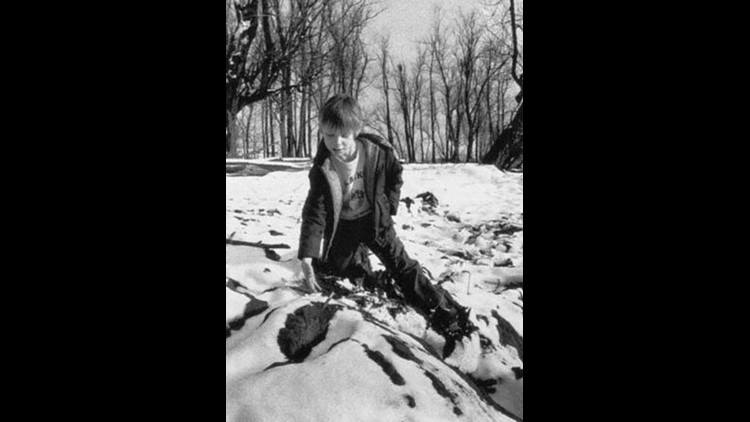

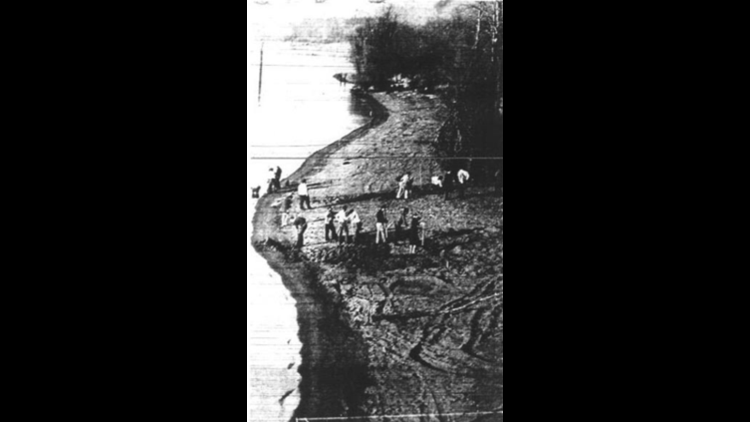





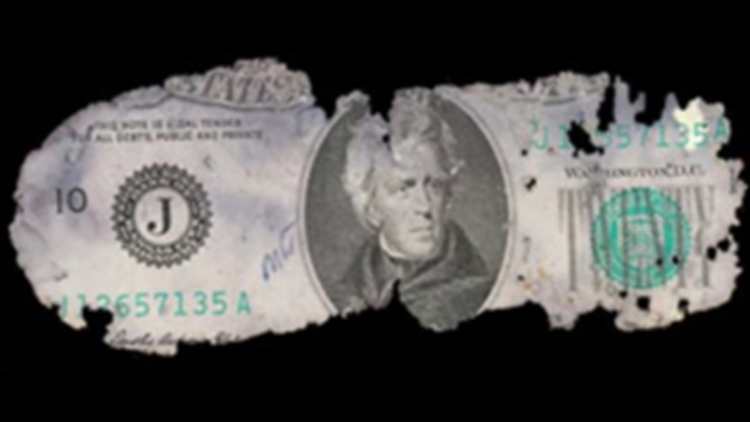

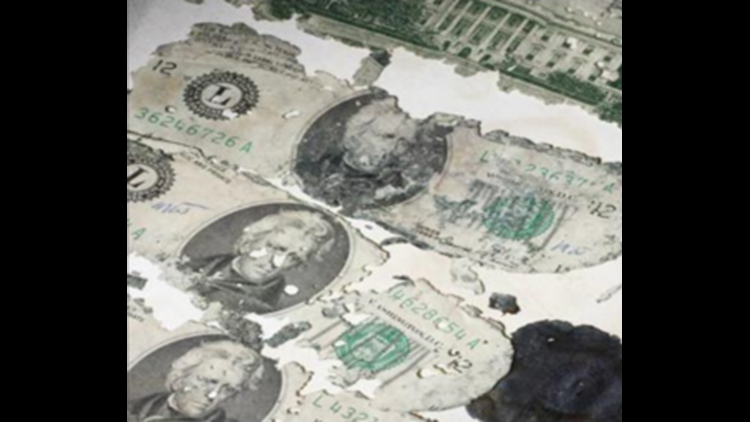

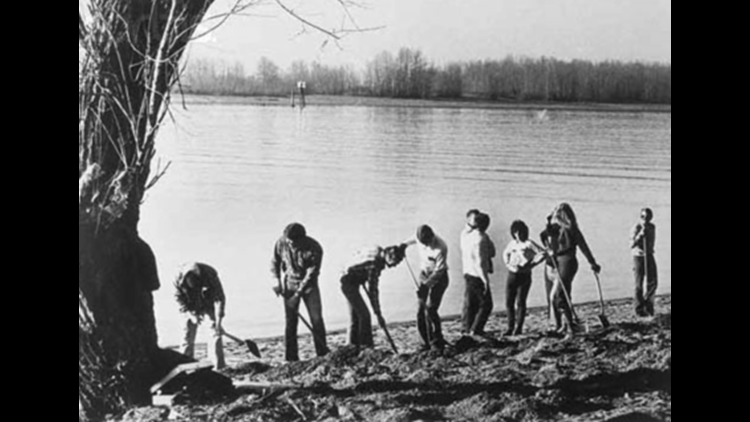
![Hand-written notes taken by NWO flight #305 crew during hijacking[ID=75884680] ID=75884680](http://cdn.tegna-tv.com/-mm-/1c778446315ec655ea435214da599d8ecc34a3f2/c=0-105-281-345/local/-/media/2015/11/16/WZZM/WZZM/635832835215802240-Crew-Notes-1.JPG)

